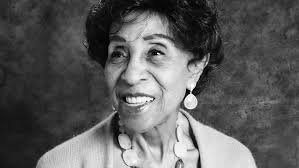
When you think of classic television, one show that undoubtedly comes to mind is All in the Family. This groundbreaking sitcom, which aired from 1971 to 1979, not only entertained millions but also sparked conversations about social issues that were often considered taboo. At the heart of this iconic series was the Bunker family, led by the unforgettable Archie Bunker, played by Carroll O’Connor. In this article, we’ll take a closer look at the cast of All in the Family, their roles, and how they changed the landscape of television forever.
The Bunker Family: A Brief Overview
Archie Bunker: The Everyman
Archie Bunker, portrayed by Carroll O’Connor, was the quintessential working-class man. With his loud opinions and often controversial views, Archie became a symbol of the American everyman. His character was a blend of humor and harsh reality, making him both relatable and infuriating.
Edith Bunker: The Heart of the Family
Edith Bunker, played by Jean Stapleton, was the loving and often naive wife of Archie. Her character brought warmth and compassion to the show, often serving as a counterbalance to Archie’s brashness. Edith’s famous catchphrase, “Oh, Archie!” became a staple of the series, showcasing her exasperation with her husband’s antics.
Gloria Bunker: The Progressive Daughter
Gloria, portrayed by Sally Struthers, was the couple’s daughter who often found herself at odds with her father’s outdated views. As a young woman navigating the changing social landscape of the 1970s, Gloria represented a new generation of thinkers and activists, challenging her father’s beliefs and pushing for progress.
Mike Stivic: The Liberal Son-in-Law
Mike, played by Rob Reiner, was Gloria’s husband and Archie’s ideological foil. A college-educated liberal, Mike often clashed with Archie over political and social issues, providing a platform for the show to address serious topics like racism, feminism, and the Vietnam War.
The Show’s Groundbreaking Themes
Addressing Social Issues Head-On
All in the Family was revolutionary for its time, tackling issues like racism, sexism, and class struggle. The show didn’t shy away from controversial topics, often using humor to highlight serious societal problems. This approach opened the door for future sitcoms to address similar themes, paving the way for a more honest portrayal of American life.
The Role of Humor in Social Commentary
The brilliance of All in the Family lay in its ability to blend humor with social commentary. The show used laughter as a tool to engage viewers in difficult conversations. For instance, Archie’s bigoted remarks often served as a springboard for deeper discussions about prejudice and tolerance.
The Cast’s Legacy
Carroll O’Connor: A Career Defined by Archie Bunker
Carroll O’Connor’s portrayal of Archie Bunker is one of the most iconic performances in television history. O’Connor brought depth to the character, allowing viewers to see both the humor and the humanity in Archie. His performance earned him multiple Emmy Awards and solidified his place in television history.
Jean Stapleton: A Beloved Icon
Jean Stapleton’s portrayal of Edith Bunker earned her critical acclaim and a devoted fan base. Her ability to convey both strength and vulnerability made Edith a beloved character. Stapleton’s performance was so impactful that she became a role model for women in television.
Sally Struthers: Breaking Stereotypes
Sally Struthers’ portrayal of Gloria challenged traditional gender roles. As a strong, independent woman, Gloria represented the changing dynamics of the 1970s. Struthers’ performance resonated with audiences and inspired many young women to embrace their own independence.
Rob Reiner: The Voice of a Generation
Rob Reiner’s portrayal of Mike Stivic brought a fresh perspective to the show. As a liberal character, Mike represented the voice of a younger generation seeking change. Reiner’s performance not only showcased his comedic talent but also highlighted the generational divide in America during that era.
